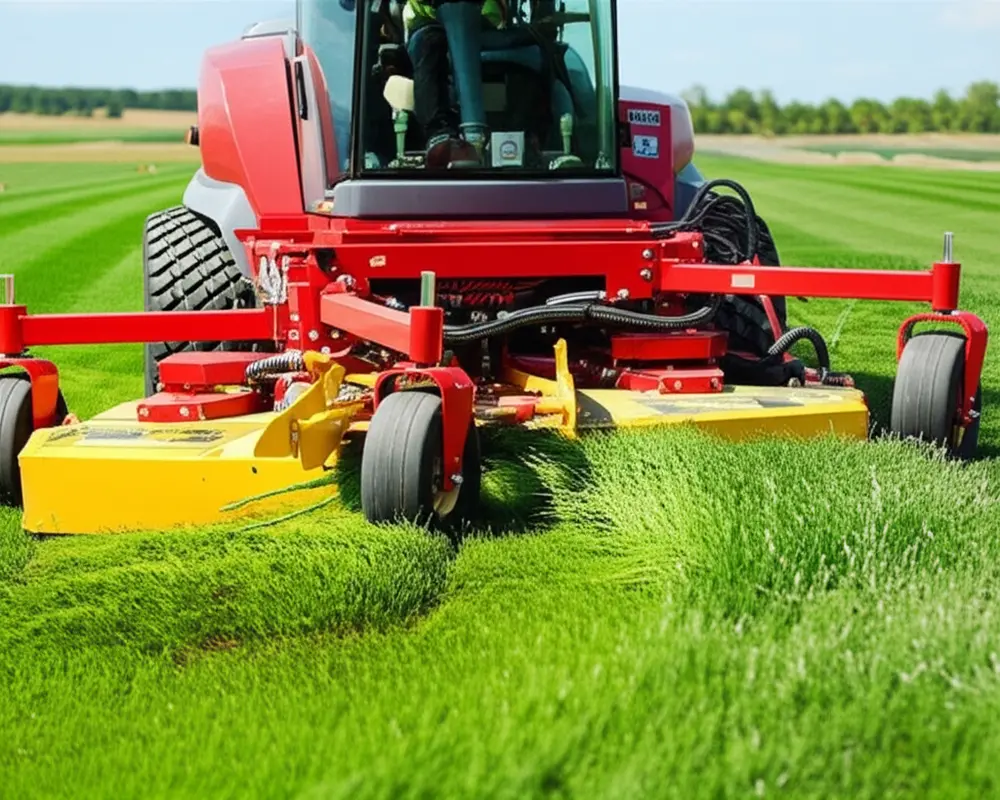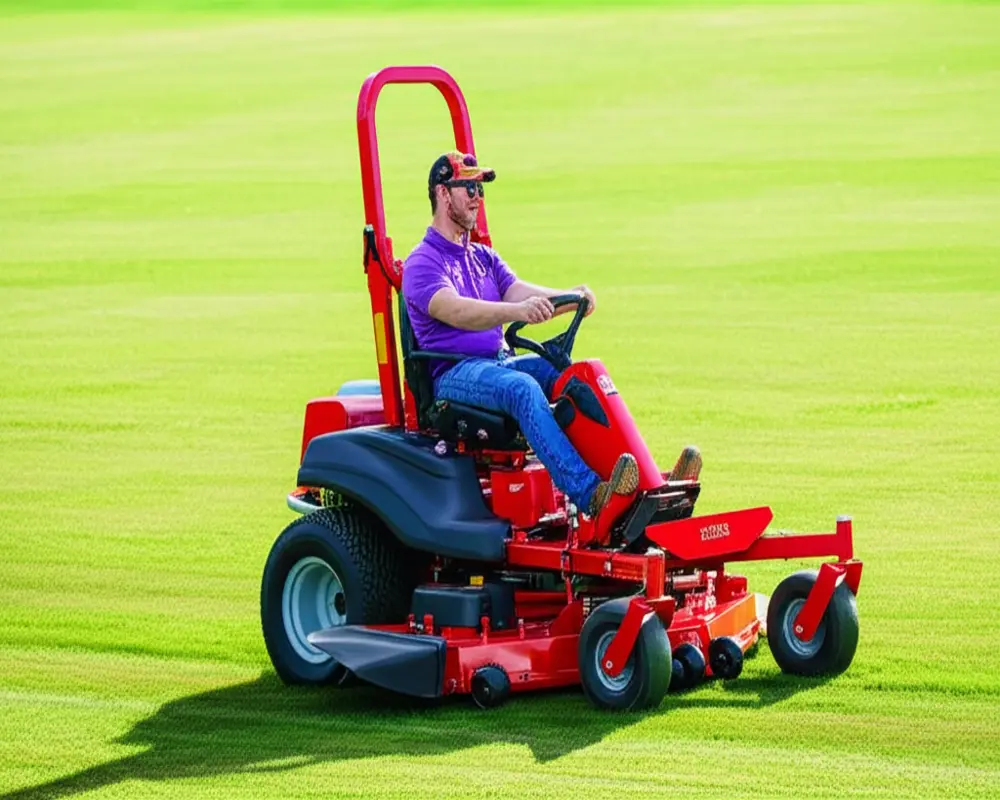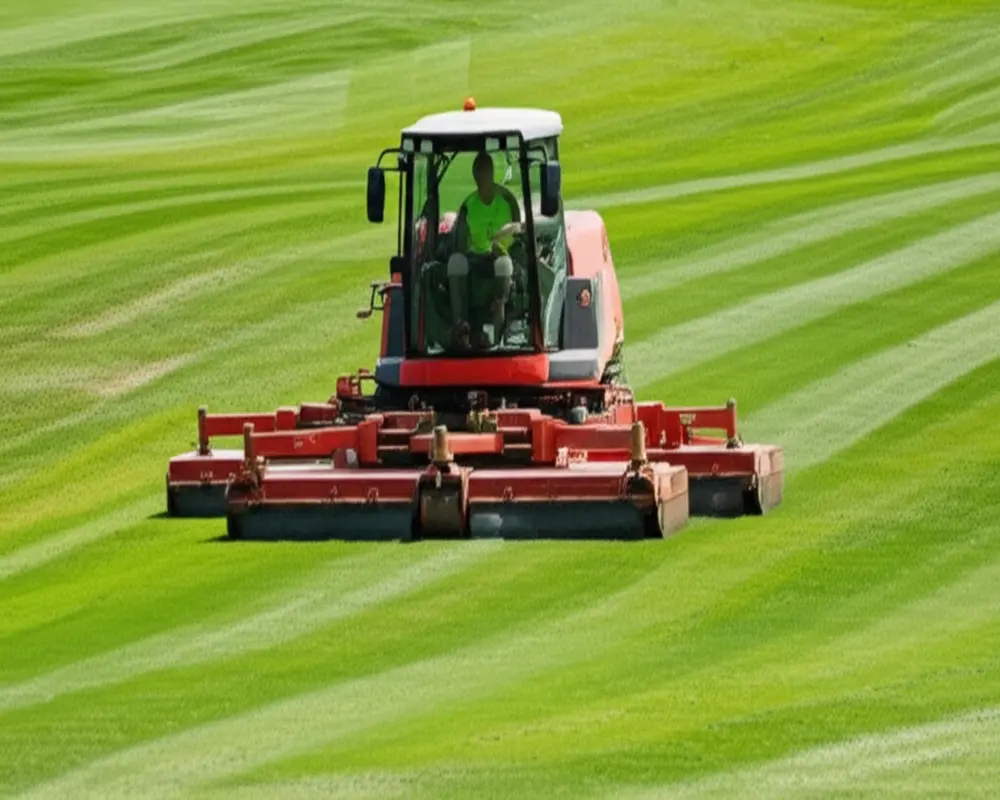Wide Area Mower Benefits: Maximize Efficiency & Turf Health in 2025
Managing large turf areas efficiently demands equipment that delivers speed, quality, and cost-effectiveness. The wide area mower benefits are transforming how golf courses, municipal parks, commercial campuses, and other expansive grounds maintain pristine turf with less effort and greater precision. In this comprehensive guide, we explore the core advantages of wide area mowers in 2025, backed by expert insights and practical considerations to help turf managers make informed decisions.
I. Introduction: Redefining Large-Scale Mowing Efficiency
A. What is a Wide Area Mower (WAM)?
A wide area mower (WAM) is a professional-grade, high-capacity machine designed for mowing large expanses of turf quickly and uniformly. Unlike traditional walk-behind mowers or tractor-pulled gang mowers, WAMs feature multiple cutting decks—often articulating for terrain adaptability—with cutting widths frequently exceeding 16 feet (approximately 5 meters). These machines combine powerful engines, advanced cutting technology, and operator-centric design to optimize both speed and turf quality.
B. Who Benefits Most from WAMs? (Target Audience)
The primary users who reap substantial advantages from wide area mowers include:
- Golf courses managing fairways, tees, and roughs where precision and speed are critical.
- Municipal parks and public green spaces requiring efficient maintenance of large open areas.
- Large sports complexes and stadiums demanding consistent turf quality for gameplay and aesthetics.
- Commercial campuses and estates where landscaping budgets and timelines necessitate productivity.
- Airports and utility companies managing rights-of-way, where safety and rapid coverage are vital.
C. The Need for Advanced Solutions
Large-scale turf maintenance involves challenges such as labor intensity, tight schedules, rising operational costs, and the imperative for uniform mowing quality. Traditional equipment often falls short in addressing these demands effectively. Wide area mowers provide advanced solutions by reducing labor hours, improving cut quality, and enhancing sustainability—all essential for modern turf management strategies.
II. Core Benefits: Elevating Productivity and Performance
A. Unmatched Efficiency & Productivity (Time & Labor Savings)
The hallmark of wide area mower benefits is their remarkable efficiency. By cutting swaths up to 16 feet (nearly 5 meters) wide or more, these machines drastically reduce mowing times compared to smaller, conventional mowers. Coupled with ground speeds that often exceed 10 miles per hour (approximately 16 kilometers per hour), a single operator can cover what would otherwise require several smaller machines and multiple personnel.
This translates into significant labor savings and operational cost reductions. Moreover, advanced engine systems are optimized for fuel efficiency, minimizing consumption per acre due to fewer passes over the turf.

B. Superior Cut Quality & Healthier Turf
Wide area mowers are engineered to deliver a consistent, even cut across expansive and often uneven terrain. Their independent articulating decks adjust dynamically to ground contours, reducing scalping and maintaining turf health. Precision blade technology ensures uniform clipping discharge, which supports healthier grass growth and enhances the overall aesthetic appeal.
Many models offer mulching options that return finely chopped clippings to the soil, naturally recycling nutrients and reducing the need for chemical fertilizers. This practice promotes turf vigor while supporting environmentally responsible maintenance.

C. Long-Term Financial Advantages & Return on Investment (ROI)
Investing in a wide area mower yields substantial financial benefits over time. Despite higher upfront costs compared to small-scale mowers, the total cost of ownership is often lower due to:
- Reduced labor expenses as fewer operators are needed.
- Fuel savings from efficient engine performance and fewer mowing passes.
- Decreased maintenance costs owing to durable commercial-grade components.
- Lower insurance premiums given the consolidated fleet size.
Robust engineering translates into high uptime reliability, minimizing costly breakdowns. An ROI framework that balances initial investment against operational savings typically shows payback within a few years for large properties.
D. Enhanced Versatility and Adaptability
Wide area mowers excel across diverse terrains, from flat lawns to rolling hills and uneven grounds. Articulating decks and advanced traction systems enable smooth operation on slopes and irregular surfaces without compromising cut quality. Adjustable cutting heights accommodate various grass types and conditions, including dense or overgrown turf, allowing operators to tailor mowing practices to specific turf management goals.
E. Operator Comfort, Safety, and Morale
Modern wide area mowers prioritize operator well-being through ergonomic design features such as suspension seats, adjustable controls, and reduced noise and vibration levels. Safety enhancements—including rollover protection systems (ROPS), seat belts, improved visibility, and advanced braking—foster a secure working environment.
Comfortable, safe equipment contributes to higher operator morale and retention, which is crucial in managing labor challenges and ensuring consistent mowing quality.

F. Environmental Responsibility and Sustainability
Wide area mowers reduce the environmental footprint of turf maintenance. Their fuel-efficient engines emit fewer greenhouse gases per acre mowed compared to multiple smaller machines. With fewer passes needed, soil compaction and turf stress are minimized, contributing to healthier landscapes.
Quieter operation reduces noise pollution, an important consideration near residential areas or sensitive habitats. Additionally, mulching capabilities promote nutrient recycling, lessening reliance on synthetic fertilizers in line with EPA sustainable lawn care practices.
III. Strategic Considerations Before Investment
Before acquiring a wide area mower, turf managers should assess factors such as property size, terrain complexity, and desired finish quality. Transitioning from multiple smaller machines to a single WAM requires planning, including operator training tailored to machine specifics and safety protocols.
Operational costs beyond the purchase price—such as fuel, maintenance, and labor—must be carefully evaluated to understand long-term value. Consulting industry insights, such as those from Landscape Management and Golf Course Industry, can provide practical perspectives on maximizing your investment.
IV. Conclusion: A Strategic Asset for Modern Turf Management
Wide area mowers offer a strategic advantage for large-scale turf operations by enhancing mowing speed, improving cut quality, reducing costs, and supporting sustainability goals. For golf courses, municipal parks, sports complexes, and commercial estates, these machines empower grounds teams to achieve superior turf management with greater efficiency and professionalism.
Embracing the latest wide area mower technologies in 2025 means investing in equipment that not only delivers operational excellence but also supports environmental stewardship and workforce satisfaction. As turf management demands evolve, WAMs stand out as indispensable tools that redefine large-scale mowing efficiency.
FAQs About Wide Area Mower Benefits
What is the typical cutting width of a wide area mower?
Wide area mowers commonly feature cutting widths ranging from 10 to over 16 feet (3 to 5 meters), significantly wider than conventional mowers. This enables faster coverage of large turf areas.
How do wide area mowers improve turf health?
They provide consistent, even cuts with reduced scalping due to articulating decks and precision blade technology. Mulching options also return nutrients to the soil, promoting vigorous turf growth.
Are wide area mowers suitable for hilly or uneven terrain?
Yes, many WAMs have independent decks and advanced traction systems that adapt to slopes and uneven ground while maintaining cut quality and operator safety.
What is the expected return on investment (ROI) for a wide area mower?
While upfront costs are higher, ROI typically occurs within a few years due to labor savings, fuel efficiency, reduced maintenance, and improved operational uptime.
Can wide area mowers help reduce environmental impact?
Absolutely. They reduce fuel consumption and emissions per acre, minimize noise pollution, and often include mulching capabilities that decrease the need for chemical fertilizers, aligning with EPA sustainability guidelines.
For additional insights on maintaining your turf equipment, explore our guides on lawn mower troubleshooting and choosing the right garden tools.

